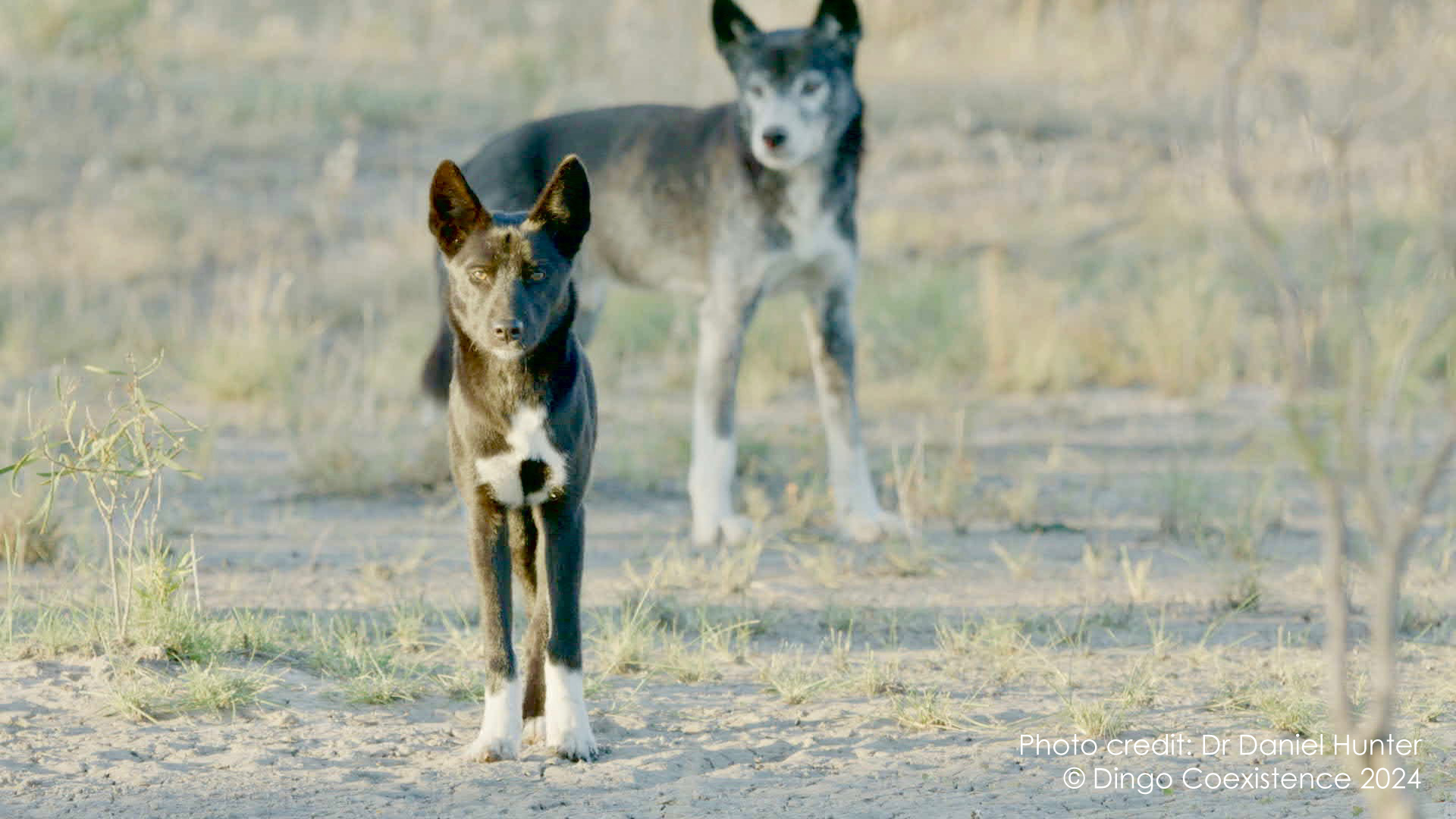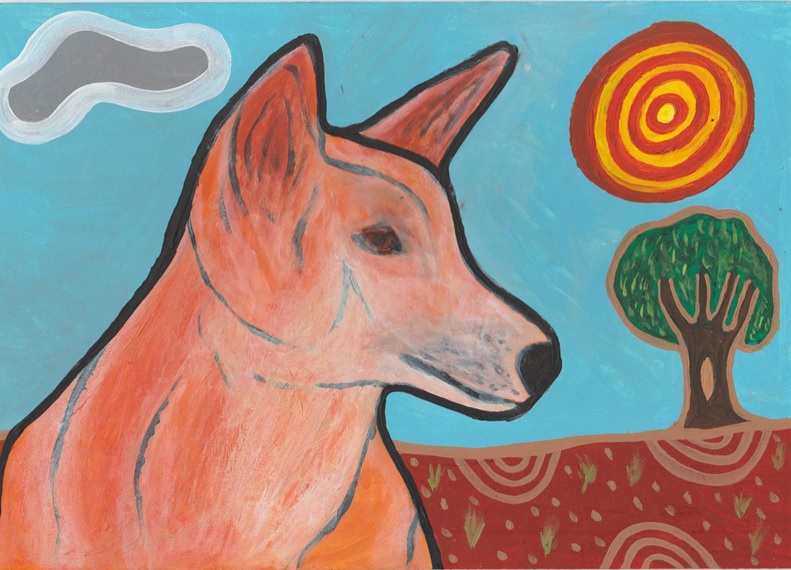
Mallee Dingo in the Big Desert National Park. Credit: Dr Daniel Hunter
Dingoes in Victoria
In Victoria, Dingoes (Canis lupus dingo) are protected threatened wildlife under the Wildlife Act 1975 and listed as ‘Vulnerable’ on the Flora and Fauna Guarantee Act 1988 Threatened List.

Credit: Brendan Kennedy
Cultural importance
Dingo is a significant cultural species for Victoria’s First Peoples and is often described as a totemic species, kin and family.
The dingo is interwoven in the Dreamtime and Creation Stories and ‘inscribed in the landscape’ in cultural landforms and rock art. The dingo features prominently in the storylines and songlines of Victorian Traditional Owners which connect peoples to dingo across Nations in Victoria.
The dingo is vital for maintaining Traditional Owner connection to Culture, including the use of language, ceremony, lore and customs and to Country.
Dingo has many names in Indigenous Australian culture, dependent on language and Country including the following Indigenous Language names for dingo in Victoria: Bandiyl, Wilkerr, Darrwal, Gal Gal, Gali, Kali, Yirrangan, Wilga, Wirrangan, and Ngeining.
New scientific research on dingo genetics and populations in Victoria
Dingoes are genetically distinct
New scientific studies have analysed dingo genetic material from across Australia. Research published in May 2023 by the University of New South Wales found hybridisation between domestic dogs and dingoes is much less common than previously thought.
It showed that across Australia there is limited evidence of hybridisation (interbreeding) between domestic dogs and dingoes. This means most animals we previously thought were wild dogs, are in fact likely to be dingoes.
The Victorian Government is aware of further research examining the genetic characteristics of Victoria’s dingo population, which has undergone standard peer review and is soon to be published.
Further reading:
Cairns, K. M., Crowther, M. S., Parker, H. G., Ostrander, E. A., & Letnic, M. (2023). Genome-wide variant analyses reveal new patterns of admixture and population structure in Australian dingoes. Molecular Ecology, 32, 4133–4150.
Dingo population estimate in Victoria
In January 2024, the DEECA's Arthur Rylah Institute (ARI) calculated estimates for the Victorian dingo population using existing data from camera traps.
This work concluded the following dingo population estimates:
- for eastern Victoria, the total dingo population was within the range 2,640 to 8,800, and
- for north west Victoria, the total dingo population was within the range between 40 and 230.
Further reading:
This report is a summary of data compiled by DEECA’s Arthur Rylah Institute and includes information relating to dingo abundance and livestock predation. Following the identification of a reporting issue associated with the data contained in this report, it was updated in October 2024 and additional information provided in footnotes throughout.
Dingo management
The Victorian Government acknowledges that livestock predation is a significant challenge for Victorian farmers, and the Government has undertaken a comprehensive assessment of Victoria's dingo population to guide management practices that most appropriately balance the protection of livestock and the conservation of dingoes.
Order in Council unprotecting the dingo in certain circumstances
From 25 September 2024, the dingo unprotection Order will be remade in eastern Victoria and will have effect until 1 January 2028.
The new dingo unprotection Order will allow the lethal control of dingoes for the protection of livestock on private land and within a 3km buffer zone along the boundaries of public land in eastern Victoria. The dingo unprotection Order will no longer apply outside of eastern Victoria.
The new Order excludes north west Victoria due to the risk of extinction of its local dingo population.
Further information on the current Order in Council:
Page last updated: 04/11/24